"A New Type of Company"
The Letter Our Owner Sends to New Customers on Day One
HEY! What you're about to read is the letter we send to new Art Storefronts members.
It's written by our Owner, Nick Friend, and in it he breaks down exactly what is so different about what's happening at Art Storefronts.
You'll learn:
1. Why you can't afford to continue operating in isolation as a creator.
2. The groundbreaking element that makes Art Storefronts so much more valuable than what you get from a "traditional" company.
3. The one thing Nick predicts will be "the biggest difference-maker in your art business going forward."
If you've been wondering why Art Storefronts seems to be such a hub for artist success, you're about to find out.
This information will change the way you think about your art business. It may even change your life.
Hi there,
I am glad you are here.
Let me introduce myself.
My name is Nick Friend, and I am an owner of Art Storefronts.
I am writing this because there is some very important information that I would like to pass to you personally, in my own words. I believe it will have a big impact on your future success - which is the entire purpose of Art Storefronts.
Let's start at the beginning: why you've decided to join Art Storefronts.
You likely have a few assumptions about us – why we are here and what our role will be in your success as a photographer or artist.
Likewise, I have my own assumptions about why you are here, based on the thousands who have come before you.
So let's take a second to get on the same page and make sure we have a common understanding of our relationship.
My assumption is that you are likely here because you want to make a living (or at least some decent side income) from your art. You joined Art Storefronts because you believe we will give you the best shot at doing this.
How'd I do?
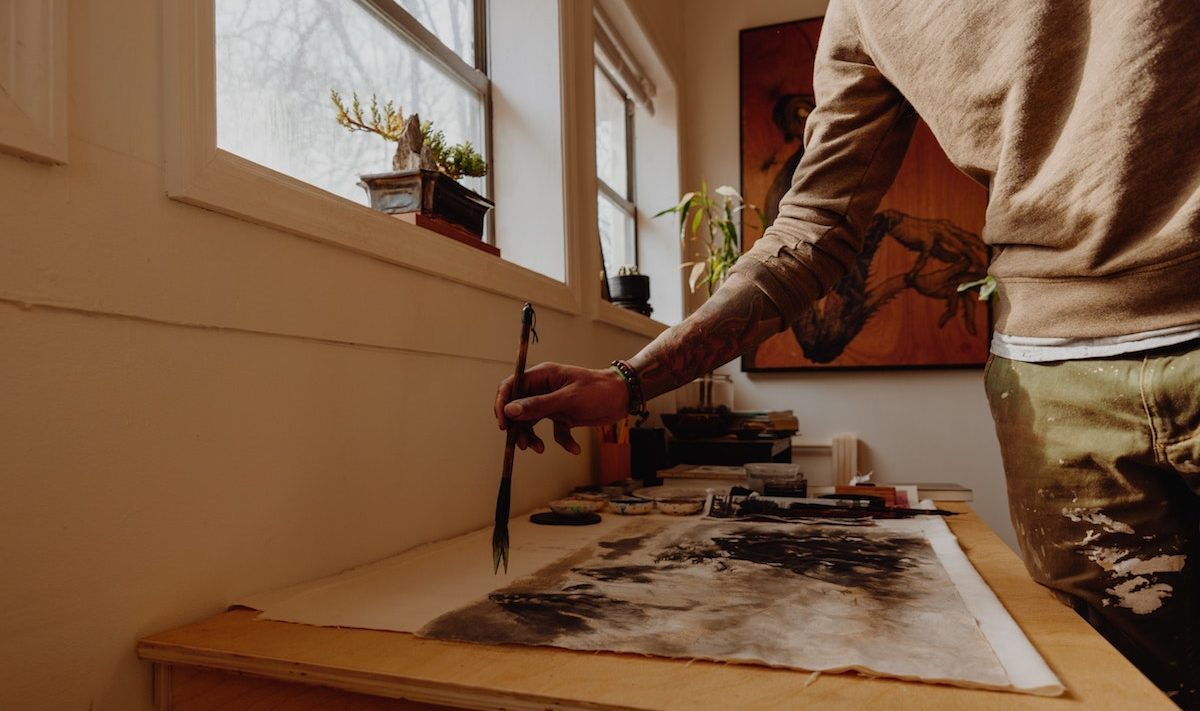

Well, that was the easy part. This assumption is almost always correct. Where things get off track is how accurate your assumptions are about us.
You're right in thinking we will give you the best shot at earning a living from your art, but you may not actually yet realize why that is.
Many of our new customers come in viewing us like a traditional "website company". They think, "there's a bunch of options for E-commerce websites, and yours happen to be built specifically for photographers and artists. That's why you're going to improve my business."
And while this is technically true, it is not nearly the full picture. If you have similar thoughts about us, I don't blame you – as a way of being efficient, our minds love to put things into boxes that we already know and understand.
So I wouldn't be surprised at all if you've put us into the "website company" box.
Well, buckle up. This is about to get mind-altering.
You never change things by fighting the existing reality. To change something, build a new model that makes the existing model obsolete. - Buckminster Fuller
Art Storefronts is a new type of company.
One that not only provides a product or service, but wraps a network around all of those using it so that everyone can communicate and collaborate towards a singular goal.
This is not only very different from traditional companies, it is groundbreaking. It will have a big impact on your future and is worth understanding on a deeper level.
Let’s first discuss what a traditional company is.

A traditional company provides you with a product or service, along with customer support when you need it. You are already familiar with traditional companies, because you probably use them every day. With traditional companies, you use the service as you wish, but you are completely on your own to create success from it.
In other words, every customer uses the service in isolation from one another.
This structure creates many problems. The biggest of which is that every customer has to go through the same learning curve and repeat the same mistakes. There is no shared knowledge. There are no shared costs. You bear 100% of the cost of learning, trying, testing, failing, and eventually growing.
For example, if we were a traditional company, it would mean that if one of our customers learned the hard way that a certain way of setting up an art website doesn't lead to any sales, you would still have to learn that lesson for yourself.
You'd spend a year struggling with it before realizing that particular way of designing a website isn't a great idea. Something the other customer realized a year prior.
How many years can you afford to give away to mistakes that others have already experienced and corrected?
The problem goes far beyond website design.
Say someone paid a consultant for Instagram marketing advice. Advice that you could benefit from too. In a traditional model, you would have to go hire your own consultant and pay for the exact same information!
Every. single. lesson. is up to you to learn and pay for.
This is redundant and insane, and it's the most expensive way to run your business. Not to mention frustrating!

Another characteristic of the traditional model is that every customer has their own "upper limit" – the furthest point they will go.
Basically, this is your individual ability to learn, finance, and figure it all out on your own. Without leveraging any learnings from others, it's easy to see why many photographers and fine artists fail or grossly underperform.
Think about all the artists using traditional companies to host their portfolio websites that are likely fraught with mistakes and poor execution.
The companies behind those websites may help them troubleshoot a problem or two, but does it really matter to them whether that artist ever ends up selling anything?
Do they even know what that artist is doing right now? What direction their compass is pointed in? Whether their next year spells success or failure?
And if they are concerned about their customers' success, do they have representatives who are qualified to advise them on what to do about it?
No, most traditional companies are only concerned about their customers up to a specific point.
Their service needs to be functional, and they need to have friendly support when you need it. So long as these two things are covered, they are doing a good job!
Fair enough if all they're after is adding on as many new customers as is humanly possible. But if they want to enable their current customers to actually succeed, it's clear the traditional model is fatally flawed.
So, what's the alternative?

Here's the breath of fresh air I've been building to this whole time:
Photographers and artists should be collaborating with each other.
This is common sense. If you are facing a problem right now, chances are someone else has already solved it.
This sort of knowledge and experience should be shared and stored somewhere for others. Failures and mistakes should be avoided - never repeated.
→ Connecting customers within a network solves all of this.
When customers have the ability to collaborate, problems that plagued people for years can be solved within hours or even minutes.
Amazing, right?
And it's just the beginning. The next layer of value is added when customers are able to collaborate with company team members within the network.
In our case, it's our marketing team - experienced art marketers that have seen it all and are prepared to cut to the chase with advice that incorporates learnings from hundreds if not thousands of artists.

These company team members become a "shared resource" for everyone to use. They are professional problem solvers. As experts in the disciplines of the specific business model, they serve the community as leaders, teachers, coaches and mentors.
To fully illustrate the power of this, consider a challenging topic like Facebook Advertising.
The marketing team can own a topic like this from beginning to end. As experts in art marketing, they start by testing different tactics and running case studies at scale. They have the wherewithal to spend considerable sums of time and money to figure out exactly what works.
When conclusions have been reached, they release a playbook to all the members in the network as a shared resource. The playbook is state-of-the-art. From there, they support everyone through coaching and mentorship.
Members follow the playbook and collaborate with other members. As new discoveries are made based on real world experiences, the playbooks are updated. This is magical, and the collaborative network makes it all possible.
When everyone is synchronized - operating from the same calendar, working on the same business and marketing plan, all together at the same time - the network becomes a powerful herd, forging ahead in pursuit of greater success.
This is Art Storefronts – a business with a collaborative network.
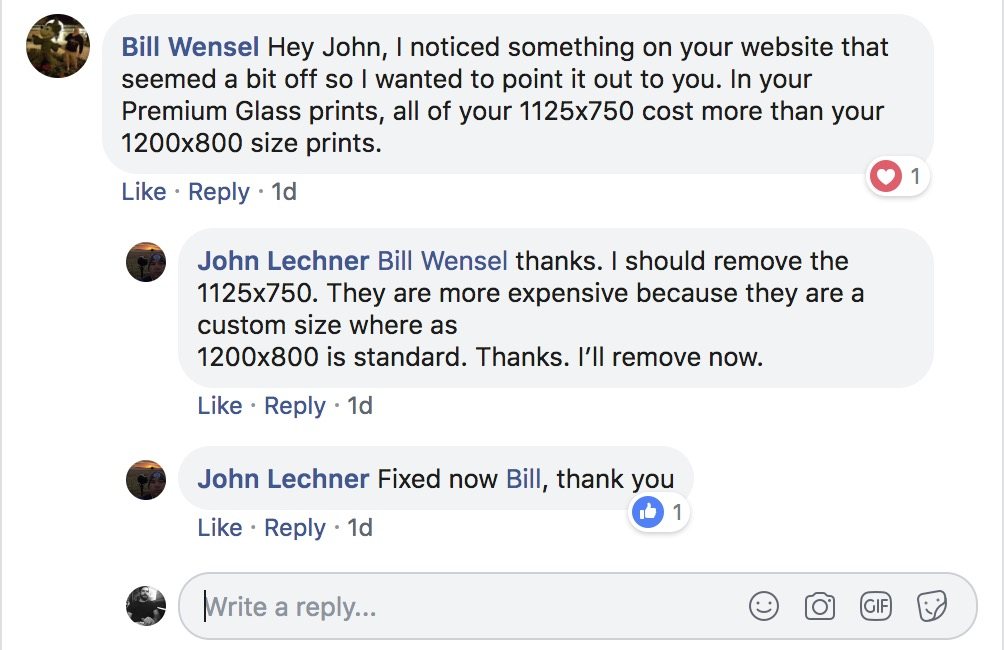
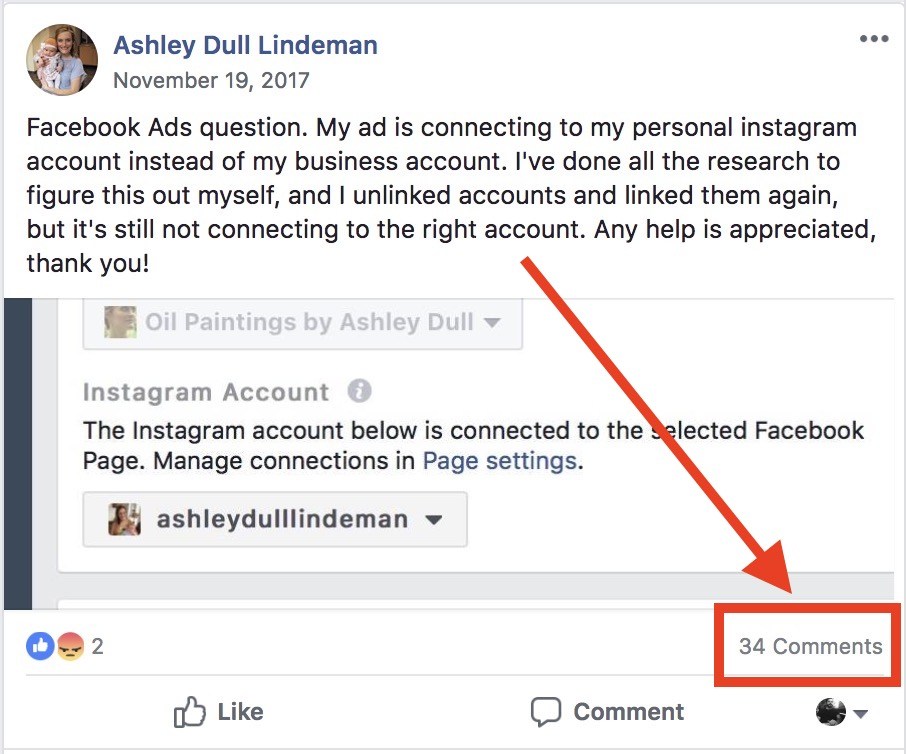

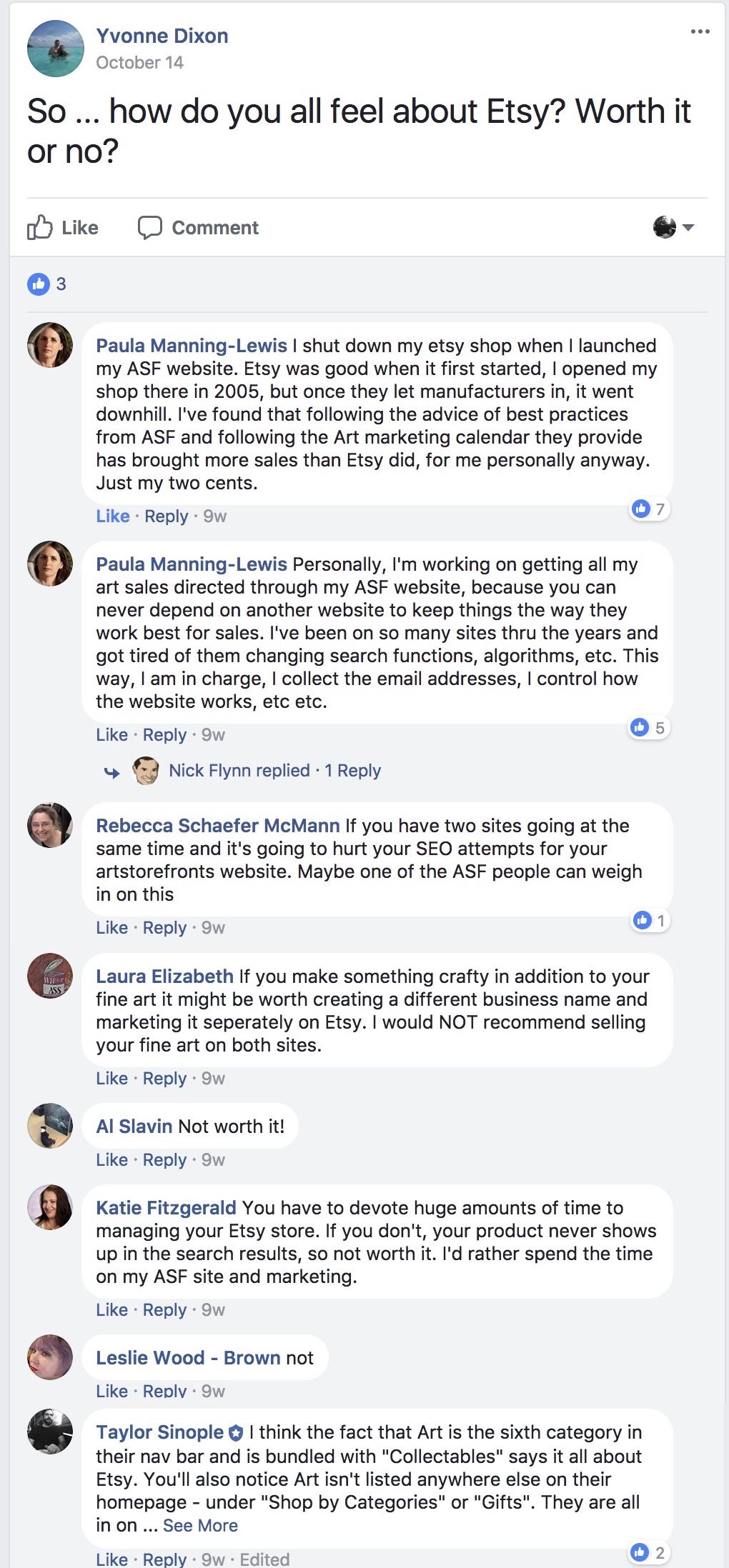
We provide a service to a very specific group of customers, and we wrap a collaboration network around the whole thing.
I see the results personally almost every day: someone who has been on the wrong track, with their compass pointing towards failure, leverages the network and gets back on the right track. The network unleashes the power of “strength in numbers”.
We eliminate the isolation problem. We eliminate your individual "upper limit". Regardless of your experience level, you will achieve far more than you could on your own. You will also do it faster and more efficiently.
My last point about this covers the value of having mentors.
If you seek wisdom from any experienced entrepreneur, they will stress how important it is to surround yourself with mentors and coaches. Every single one of them. There are no exceptions.
Operating your business alone on an island - without anyone to lean on or audit what you are doing - is a recipe for failure.
One who refuses to seek the advice of others will eventually be led to a path of ruin. - Anonymous
The network solves this problem. Rather than having to go out and find credible mentors in person (which is not practical for everyone to do) you get them just by joining Art Storefronts. I am one of them.
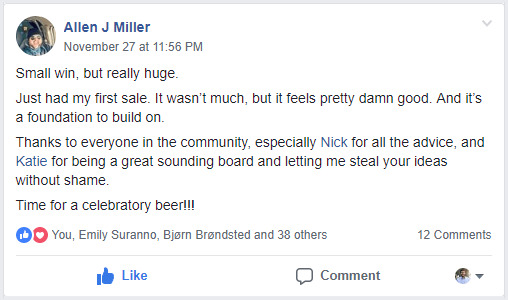
I have been to where you are trying to go, and I know what you need to get there. It is all here. As someone who has spent decades cultivating mentor relationships over my career, I must tell you that this setup is an absolute dream. The fact that you don’t have to build all of this yourself and can instantly plug into a network of this quality is nothing short of astounding.
You are the average of the five people you spend the most time with. - Jim Rohn
Okay, I know that was a lot - but was I right in my assumption that your picture of Art Storefronts was incomplete? Let's review:
ISOLATION
- You are operating alone.
- You have to learn every little thing the hard way.
- No easy access to mentors.
- No shared costs - you have to pay for every bit of progress you make, from hiring consultants to making costly mistakes that are easy to avoid with the right information.
COLLABORATION
- You are part of a collaborative network of photographers and artists from around the world.
- You can take advantage of the learnings of those who came before you.
- A variety of mentors available to guide you through the process of running a small business and marketing your work.
- Shared costs - others have likely already attempted what you want to do and can fill you in on the information you want for free.
Understanding the differences between a Traditional Company and a Collaborative-Network Company is so key because, believe it or not, some Art Storefronts customers completely miss the point.
They continue to operate in isolation as if we were a Traditional Company. They never connect themselves to the network. As a result, they never actually learn anything! Never seek advice, never leverage the wealth of resources available to them, never receive valuable audits from mentors.
And, you guessed it, it never goes well.
It's a path of high stress, high cost, and high rates of failure.
I don't want that to be you. I believe leveraging the network will be the biggest difference-maker in your art business going forward.
So, whether you joined Art Storefronts thinking the value was in some fancy website feature, or in the marketing help - know that all of these things are here and will play a role in your success, but without question the most valuable aspect of Art Storefronts is the collaborative network.
Make it a priority to join in on it, leveraging it every way you can. It will help you make smarter, more effective decisions every single day.
In a typical day, you make dozens of little decisions in your mind about your art business: What tasks you do, what tasks you don't do, with whom to associate, and whom to avoid. These individual decisions can appear trivial, even inconsequential, but taken as a whole, they define why you are in the place you are right now. They are predictors of who you will become.
- Nick Friend (Owner)

Before I wrap up, I'd like to quickly take you behind the scenes to answer a question that you may be considering at this point: why?
Why did we go through the trouble and expense of structuring our company this way?
The answer is simple: if Art Storefronts was going to become the place to go for photographer and artist success, we had to build our company in a way that not just allows for success, but actually drives it.
We had to make your success as a photographer or fine artist be directly linked to our success as a company.
Because for a collaborative network to function properly and create value, it must incentivize everyone towards a common good.
At Art Storefronts, that common good is customer success.
When our customers succeed, we benefit through transaction fees.
More customer success (you win) = more transaction fees (we win)
It's a simple, but profound relationship. As a company, we have a built-in incentive to invest those fees into things that will create even more customer success.
It's an engine, and customer success fuels it.
Have you ever wondered why, over the last 5 years, we have been able to release so many features when our competitors (who have been in business much longer than us) have released next to none?
Now you know.

It’s not because we are better programmers than they are. It’s because of this key difference in company design.
With a structure like this, nobody has to beg for features or new marketing resources -- they are coming whether you like it or not. This is what happens when incentives are properly structured.
Every member of every success level has an incentive to root for each other, help each other, and encourage more members to join. It only makes the whole engine bigger and better.
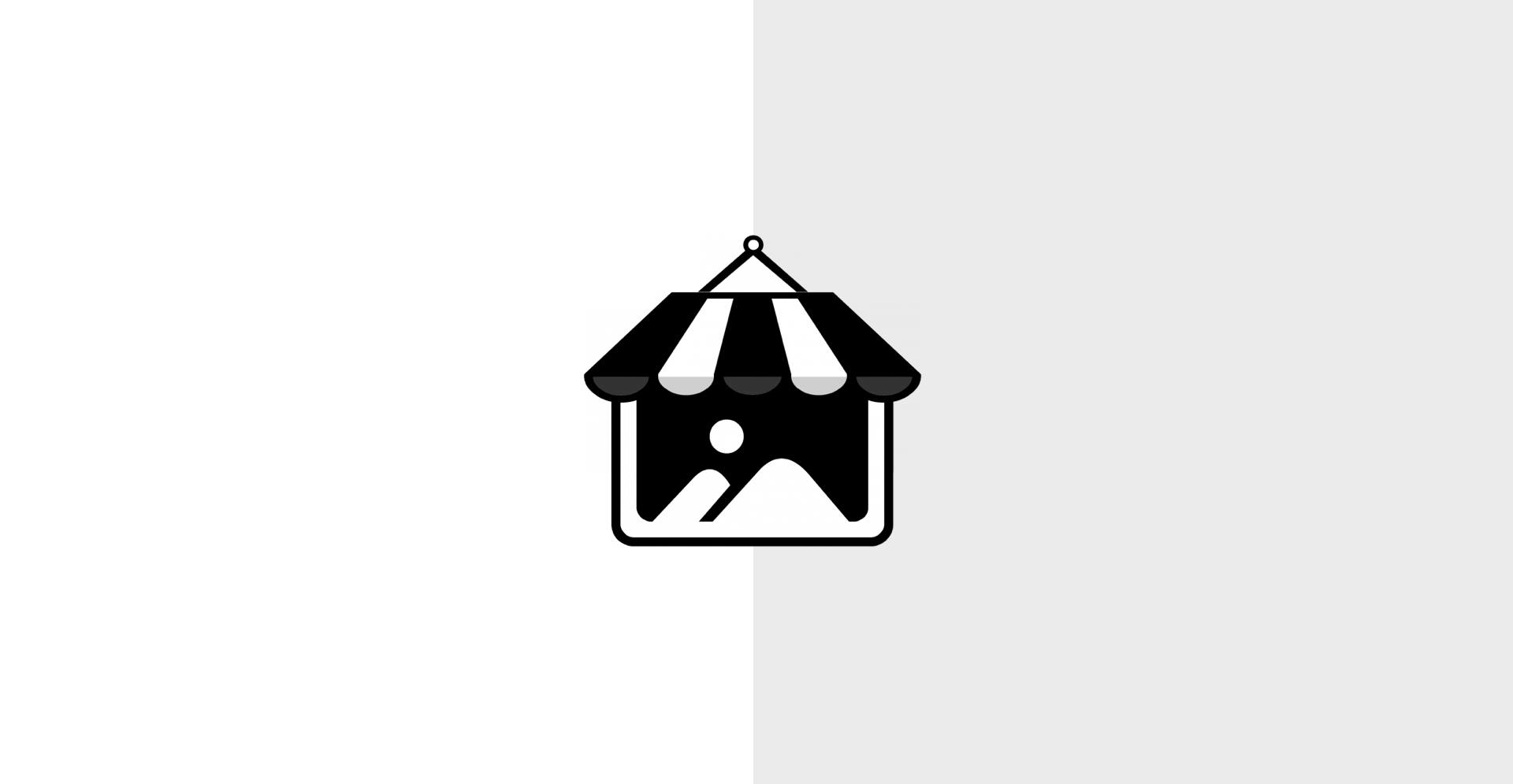
Art Storefronts was not created to be a “website company”. Nor was it created to be a marketing consultancy.
Art Storefronts was created to get one specific job done:
To help photographers and artists make a living from their art.
At the core, we believe photographers and fine artists should benefit most from their work. Having been in the art industry 20 years, I have seen many, many people getting rich off photographers and artists work, but not the other way around.
That's why we first took time to think through the problem deeply, and created a new type of company that would actually get the job done.
Thousands of customers later, here we are. Art Storefronts and our Collaborative Network is now a force of nature. It is forging ahead and nobody can stop it. The velocity is undeniable. Photographers and artists are finally rising up to control their own destiny.
I am both humbled and thankful that you have entrusted us to help you on your entrepreneurial journey. I want you to know that we are all here for you, and we are rooting for you.
The revolution has begun.
Nick Friend
Owner, Art Storefronts
Nick Friend is an owner of Art Storefronts and a success mentor to its members.
He carries with him 18 years of industry experience, and is committed to building a world in which artists are the ones who profit most from their work.
Learn more in Nick's full bio.
Related Posts
- A $3,700 Art Sale Placed on an iPad? A New Era of Selling Art Has Arrived
- Art Storefronts Is Not a Marketplace, We're Something Better
- 20 Must Have Features to Sell Art Online with Your Website
- Introducing Live Wall Preview with Augmented Reality Feature
- Our Mission: Solving the Starving Artist Problem
- The Journey: Learning How to Sell Art Online
Art Storefronts Is the All-In-One Art Business Solution
We help photographers and artists open and run their own art gallery business, online.
Your Own Website
Best-in-class software built from the ground up specifically for photographers and artists.
Back Office Tools
Spend less time on paperwork, and more time creating.
A Marketing Plan
Skip the frustration – we'll teach you what's actually working for photographers and artists.
What Our Customers Are Saying

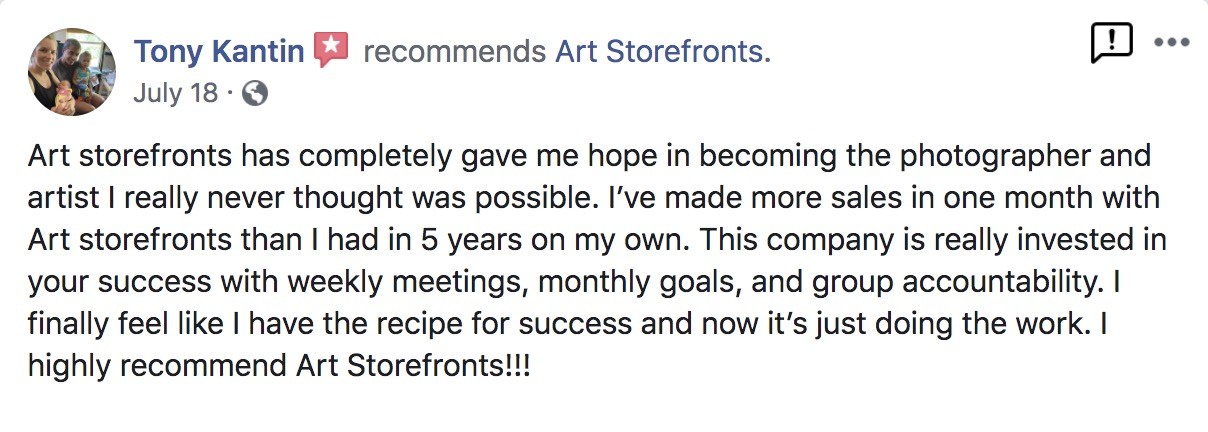

Sell More Art With Augmented Reality
An augmented reality tool purpose-built for artists and photographers. You'll sell more art than ever when your buyers can see what your work will look like on their walls – straight from your website (no app downloads required!).
Get Art Marketing Advice Sent to Your Inbox
Enter you email address below and we'll keep you up-to-date on all the latest and greatest art marketing strategies and tactics.


